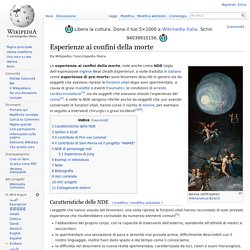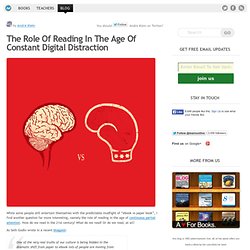

100 Websites You Should Know and Use (updated!) Entertainment Meet David Peterson, who developed Dothraki for Game of Thrones There are seven different words in Dothraki for striking another person with a sword.

Among them: “hlizifikh,” a wild but powerful strike; “hrakkarikh,”a quick and accurate strike; and “gezrikh,” a fake-out or decoy strike. But you won’t find these words in George R. R. Culture My Year of TED: How 54 talks changed a life By Kylie Dunn What do you get when you cross a 39-year-old perfectionist with 54 TED Talks and far more honesty than any person probably needs to experience? Entertainment Meet David Peterson, who developed Dothraki for Game of Thrones There are seven different words in Dothraki for striking another person with a sword.
Culture My Year of TED: How 54 talks changed a life By Kylie Dunn What do you get when you cross a 39-year-old perfectionist with 54 TED Talks and far more honesty than any person probably needs to experience? Presentazione di ISTINTO DI MORTE E CONOSCENZA - Archivio Video - Associazione culturale Amore e Psiche.
Esperienze ai confini della morte. Da Wikipedia, l'enciclopedia libera.

Le esperienze ai confini della morte, note anche come NDE (sigla dell'espressione inglese Near Death Experience, a volte tradotta in italiano come esperienza di pre-morte) sono fenomeni descritti in genere sia da soggetti che avevano ripreso le funzioni vitali dopo aver sperimentato, a causa di gravi malattie o eventi traumatici, le condizioni di arresto cardiocircolatorio[1], sia da soggetti che avevano vissuto l'esperienza del coma[2]. A volte le NDE vengono riferite anche da soggetti che, pur avendo conservato le funzioni vitali, hanno corso il rischio di morire, per esempio in seguito a interventi chirurgici o gravi incidenti[3][4].
Caratteristiche delle NDE[modifica | modifica wikitesto] I soggetti che hanno vissuto tali fenomeni, una volta riprese le funzioni vitali hanno raccontato di aver provato esperienze che risulterebbero connotate da numerosi elementi comuni[5]: Ipotesi e studi[modifica | modifica wikitesto] Padre Albert J. A Reply to Shermer Medical Evidence for NDEs, Pim van Lommel.
In: Brain Deathand Disorders of Consciousness.

Machado, C. and Shewmon, D.A., Eds. New York, Boston, Dordrecht, London, Moscow: Kluwer Academic/ Plenum Publishers, Advances in Experimental Medicine and Biology Adv Exp Med Biol. 2004; 550: 115-132. Www.consciousnessbeyondlife.com ABOUT THE CONTINUITY OF OUR CONSCIOUSNESS by Pim van Lommel Some people who have survived a life-threatening crisis report an extraordinary experience. And should we also consider the possibility of conscious experience when someone in coma has been declared brain dead by physicians, and organ transplantation is about to be started? First I want to discuss death. What happens when I am dead? In 1969 during my rotating internship a patient was successfully resuscitated in the cardiac ward by electrical defibrillation. Several theories on the origin of an NDE have been proposed. Results: 62 patients (18%) reported some recollection of the time of clinical death.
Several theories have been proposed to explain NDE. Archleaks Italia. La Crepa nel muro. Triangular theory of love. The triangular theory of love is a theory of love developed by psychologist Robert Sternberg. In the context of interpersonal relationships, "the three components of love, according to the triangular theory, are an intimacy component, a passion component, and a decision/commitment component.
"[1] "The amount of love one experiences depends on the absolute strength of these three components, and the type of love one experiences depends on their strengths relative to each other. How to do anything. Wayne Schoenfeld, Los Angeles documentary, fine art and tableau vivant photographer. Self improvement. Life. Counseling. Big Five personality traits. In psychology, the Big Five personality traits are five broad domains or dimensions of personality that are used to describe human personality.

The theory based on the Big Five factors is called the five-factor model (FFM).[1] The five factors are openness, conscientiousness, extraversion, agreeableness, and neuroticism. Acronyms commonly used to refer to the five traits collectively are OCEAN, NEOAC, or CANOE. Beneath each global factor, a cluster of correlated and more specific primary factors are found; for example, extraversion includes such related qualities as gregariousness, assertiveness, excitement seeking, warmth, activity, and positive emotions.[2]:24 The Big Five model is able to account for different traits in personality without overlapping.
Empirical research has shown that the Big Five personality traits show consistency in interviews, self-descriptions and observations. §Five factors[edit] Openness to experience: (inventive/curious vs. consistent/cautious). The Role Of Reading In The Age Of Constant Digital Distraction. While some people still entertain themselves with the predictable mudfight of “ebook vs paper book”, I find another question far more interesting, namely the role of reading in the age of continuous partial attention.

How do we read in the 21st century? What do we read? Or do we read, at all? As Seth Godin wrote in a recent blogpost: One of the very real truths of our culture is being hidden in the dramatic shift from paper to ebook–lots of people are moving from paper to ‘no ebook’. So, instead of lamenting the lack of paper smell and the disappearance of book covers to impress potential mating partners, maybe we should observe our own reading habits first.
For example, I have to admit that sometimes the Internet makes me crazy. Reading seems to counter many of the negative behaviors that come with daily Internet use: they make you slow down and use your imagination, they allow you to experience psychological realities not from an outer but from an inner perspective. img credit: Open Culture. Rivista Studio. ZeitNews. Memrise.